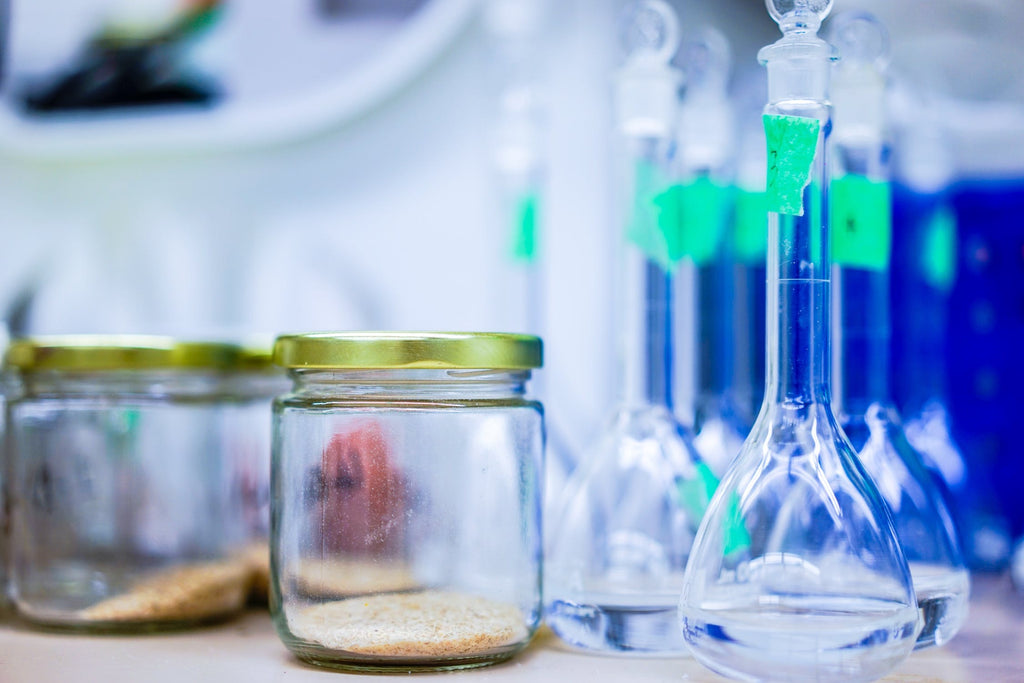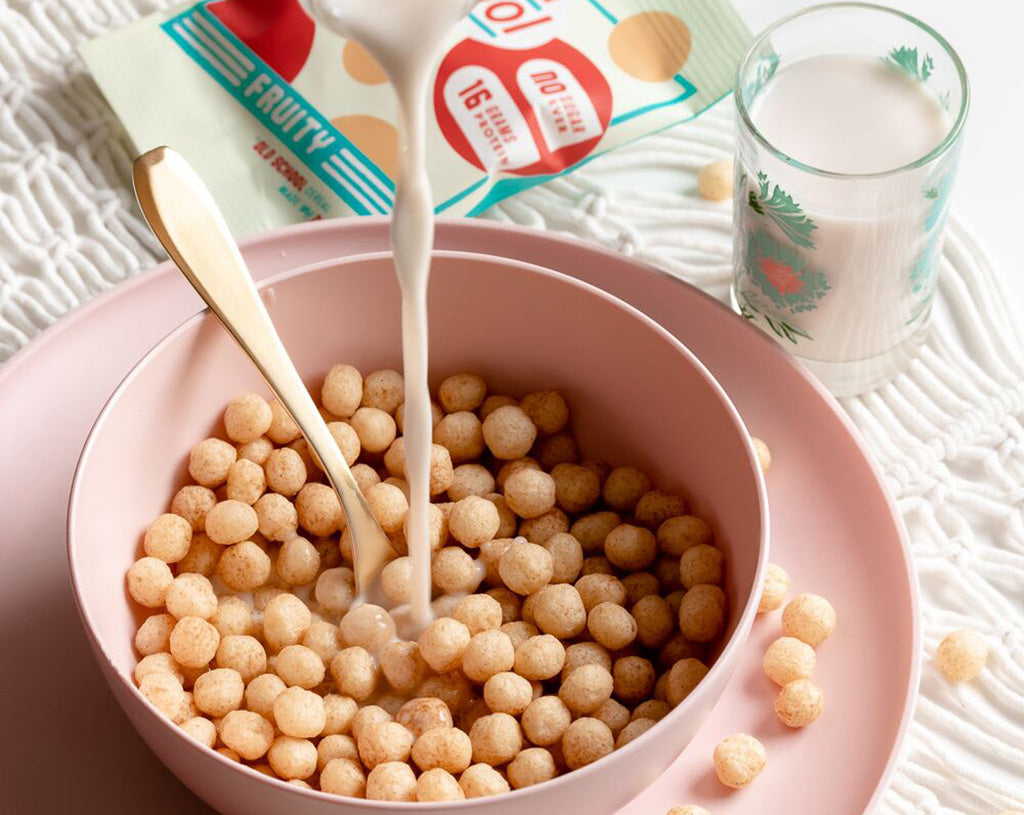
Oh, cinnamon. There's just something about this spice that sends our hearts a flutter. The warm scent and comforting tone that's both sweet and spicy can bring back childhood memories of everything from crunchy cinnamon cereal with cold milk to piping hot cinnamon rolls fresh from the oven.
But as a responsible adult, you're trying to make better food choices. Plus, the news that breakfast cereals contain far more sugar than experts recommend may have put a damper on your old morning routine.
Here at The Cereal School we get you — that’s why we’ve created a way to stay true to your health goals without compromising on the crispy goodness that your favorite cereal used to bring.
First, A Word About Sugar

The American Heart Association recommends that men should have no more than 36 grams of sugar per day (9 teaspoons), while women should not exceed 25 grams (6 teaspoons) per day.
The problem is, thanks largely to the surfeit of processed and packaged foods (breakfast cereals are one of the worst offenders), many people are consuming about 22 teaspoons of added sugar daily, which is an extra 350 calories every single day.
Every. Single. Day. It's no wonder we're a nation struggling with obesity and Type 2 diabetes.
Even if we read labels to make sure that sugar isn't the first ingredient (or even in the top five) of our favorite foods, with its many different names it's hard to tell if we're actually having more sugar than we think.
Manufacturers can call it brown sugar, maple syrup, or even caramel color, but at the end of the day it’s all sugar. And while we may know that high fructose corn syrup and dextrose aren't good for us, what about something more obscure like muscovado or maltol? (Yup, those are just a couple of other not-so obvious names for sugar.)
One way to get around this confusion is to look at the nutrition facts and percent daily values of the label — this informs you of how many nutrients there are in a single serving, and what percentage of nutrients each serving will give you. This will also provide you with a clear idea of how much sugar there is per serving.
However, as the non-profit Environmental Working Group points out, "The serving sizes listed on nutrition tables are absurdly small. In the real world, most people fill their bowls with well over one of those minuscule servings."
So while the nutritional labels may indicate it’s a low-sugar or low-calorie food, the bitter truth is that you may be eating more sugar than is recommended.
Don't Forget About the Additives

In order to maintain freshness, many of today’s breakfast cereals are loaded with a variety of additives and preservatives. This means your favorite cinnamon cereal could really be a not-so-tasty soup of chemicals — and the jury is still out if these ingredients are completely safe for human consumption. Let's take a look at some of the more common additives you’ll find in many of today’s mainstream cereals.
Maltodextrin
Both used as a thickener to increase the volume of processed food and as a preservative, maltodextrin is also sweet and often used in place (or together with) sugar. The biggest problem with maltodextrin is that it has an extremely high glycemic index (GI), which means it'll cause a massive spike in your blood glucose level. This spike in blood glucose (and unavoidable dive) is terrible news, especially those with diabetes.
BHT
Most breakfast cereals contain some form of vegetable oil, such as canola oil or palm oil. To stop the oil from turning rancid, the chemical BHT, or butylhydroxytoluene, is added. The problem with BHT is that it's suspected to be an endocrine disruptor, which means it can mess with your hormones. Even worse is the fact that it could affect the nerve signals that the gut sends to the brain to signal when to stop eating.
Trisodium Phosphate
Trisodium phosphate is used in cereals to enhance flavor and prevent caking. While the FDA considers it generally safe to consume as a food additive, high levels of inorganic phosphorus (aka sodium phosphate) can pull calcium out of your bones, making them weak. The calcium is then deposited in your blood vessels, lungs, eyes, and heart, which can lead to increased risk of heart attack, stroke, or death.
Artificial Flavors and Colors
Nutritionists may encourage us to "eat the rainbow" — fruit and vegetables covering the full color spectrum — but we can assure you they aren't thinking of Lucky Charms and its multi-hued marshmallow bits.
After all, you'll want to back away from many mainstream cereals when you consider that they contain artificial colors, which tend to be made from petroleum (crude oil). And that's before you learn that food dyes may pose risks of cancer, hyperactivity in children, and allergies.
As for artificial flavors, why would you go for something made in a lab when you can go for the real thing? This is especially important when you consider some of the health risks involved with the chemicals used to make these fake flavors.
Popular Cinnamon Cereals: How These 3 Brands Measure Up
Cinnamon cereal is a longtime popular flavor and rightly so. The distinctive smell and taste of real cinnamon is the stuff many cereal dreams are made of. But how do three of the more popular cinnamon cereals in the market stack up in terms of their health benefits (if any)? Take a look.
General Mills Cinnamon Toast Crunch Cereal
Now, the very first ingredient of this popular breakfast cereal is whole-grain wheat, which sounds healthy when you consider its impact on your daily dietary fiber intake. On their own, whole grain foods have plenty of dietary fiber. This is fantastic news because fiber can protect against heart disease, Type 2 diabetes, and colorectal cancer.
However, with 9 grams of sugar per 3/4 cup serving in Cinnamon Toast Crunch, you'd be pretty close to reaching your daily sugar intake allowance from one teeny-tiny bowl. But this is really no surprise if you carefully read the label — this cereal is made up of five different types of sugar.
Kellogg's Cinnamon Frosted Flakes
It may contain natural flavor and some vitamins and minerals, but when the nutritional label reveals that there are 14 grams of sugar per serving of these cinnamon-flavored flakes — 23 grams if you have it with skim milk — need we say more?
Cascadian Farm Cinnamon Crunch Cereal
Since it's made from organic ingredients, the chances of finding weed killer in this cereal — probably the least appetizing additive of all — are much slimmer.
And yet, the nutrition label tells you there are some 11 grams of added sugar in a serving of Cascadian Farm Cinnamon Crunch cereal. Not exactly sweet news. There's also 29 grams of total carbohydrates per serving, which is bad news for anyone on a low-carb diet.
A Truly Healthy Cinnamon Cereal

Still can't beat that cinnamon cereal craving? We don't blame you. As we said earlier, we don't believe you should ever compromise your health for taste or convenience.
It's why we came up with our own range of cereals that are not only low-carb (just one gram per serving) with absolutely no sugar, but they're also gluten-free and made from all-natural, non-GMO ingredients. That means no artificial sweeteners or colors. And thanks to monk fruit, it still tastes sweet — without the blood sugar spike.
What’s more, Cereal School helps you go the distance with a massive 16 grams of protein per serving to keep you feeling fuller for longer. And if you ever want to mix things up and break away from cinnamon for a while, there are three other flavors to choose from: Fruity, Cocoa, and Peanut Butter. Ah, bliss.



